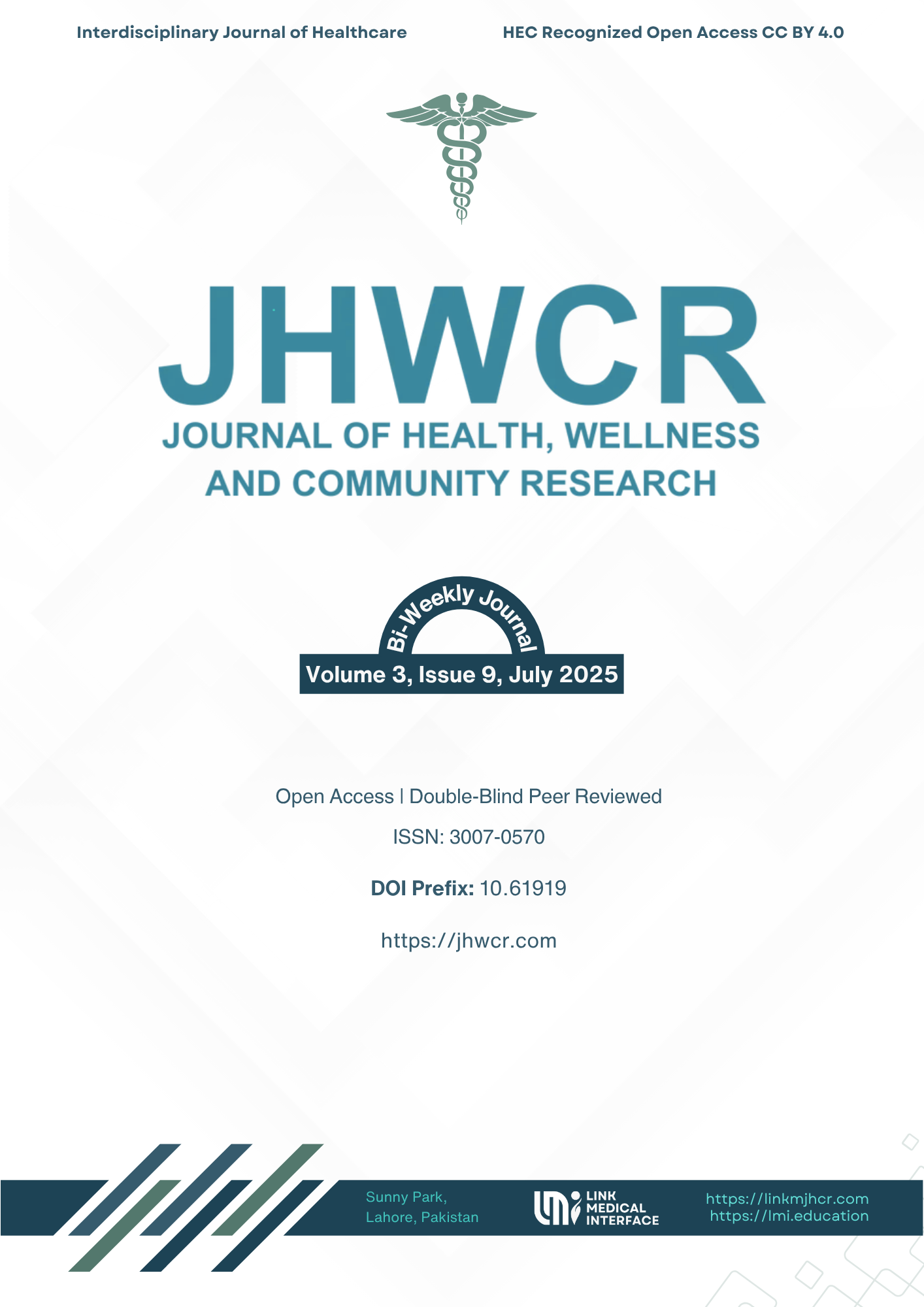Awareness of Communication Disorders among Primary School Teachers
DOI:
https://doi.org/10.61919/wmn5p155Keywords:
communication disorders, teacher awareness, primary education, speech-language pathology, early identification, Pakistan.Abstract
Background: Communication disorders in children often go undetected in educational settings due to limited teacher knowledge, undermining early identification, referral, and intervention efforts critical for academic and social development. Despite global emphasis on teacher preparedness for speech, language, and communication needs (SLCN), evidence from low- and middle-income countries including Pakistan remains scarce, particularly at the primary school level. Objective: To evaluate the awareness of communication disorders among primary school teachers in Gujranwala, Pakistan, and identify key knowledge gaps across terminology, characteristics, assessment, and rehabilitation domains. Methods: A cross-sectional observational study was conducted from January to June 2025 involving 204 purposively sampled primary teachers from public and private schools. Data were collected via a validated 19-item, self-administered questionnaire addressing four domains of awareness. Descriptive and inferential analyses were performed using SPSS v26.0, with subgroup comparisons by gender and school type, and logistic regression to identify predictors of higher awareness. Results: While general awareness of common conditions such as learning disabilities (94.0%) and hearing loss (86.5%) was high, substantial deficits were observed for autism (59.0%), articulation disorders (42.5%), and knowledge of rehabilitation options. No significant differences in awareness by gender or school sector were found, except for greater recognition of cerebral palsy’s treatability among private school teachers (p=0.03). Prior training on SLCN independently predicted higher awareness (OR 2.09, 95% CI 1.04–4.19, p=0.04). Conclusion: Primary school teachers exhibit inconsistent awareness of communication disorders, with critical gaps in early identification and rehabilitation knowledge. Targeted professional development is essential to equip teachers as effective early identifiers and referral agents for children with SLCN.
Downloads
Published
Issue
Section
License
Copyright (c) 2025 Sadaf Rizwan, Rabia Shahid, Muhammad Bilal Bhatti, Hafiza Shabnum Noor (Author)

This work is licensed under a Creative Commons Attribution 4.0 International License.


